
Join us on our trip around New Zealand
in our tubby traveling home, Gerty
Otago Peninsula
& The Catlins
Part Five
| |
| HOME |
| About Tenaya |
| About Us |
| Latest Update |
| Logs from Current Year |
| Logs from Previous Years |
| Katie's View |
| Route Map |
| Links |
| Contact Us |
![]()
February 17, 2011
The Otago Peninsula juts out from Dunedin 35km to the northeast separating the large Otago Harbour from the Pacific Ocean. A beautiful stretch of green and gold hilly land, it is sparsely populated and a haven for wildlife.
We spent a couple of nights in Portobello, about halfway down the peninsula, at the pleasant holiday park.
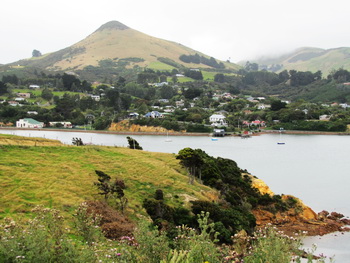
Taiaroa Head, the tip of Otago Peninsula, is home to the Royal Albatross Colony, the only place these majestic birds breed on the mainland in the world. The area is managed as a Nature Reserve by the Dept. of Conversation and has been protecting and studying royal albatross for over 70 years.
An informative center highlights the birds along with New Zealand fur seals, New Zealand sea lions, yellow-eyed penguins and little blue penguins which are all found on the peninsula and places further south.
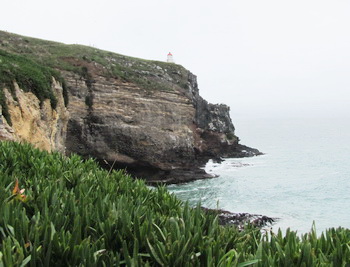
An observation building allows viewing of nesting albatross. One parent sits on the egg or chick while the other goes to sea for food. When it returns they switch duties. We hoped to see one flying in or to catch a glimpse of a chick but neither happened. So it goes with wildlife.
We were fortunate to see two royal albatrosses fly into view at separate times as we sailed to New Zealand from Fiji. These gigantic birds are about a meter long with wingspans up to 3 meters. They definitely did not look like any other bird we'd ever seen flying! Their wings can be locked in place by tendons for extended soaring when they circumnavigate the Southern Ocean. When they nest, the wings fold into three sections.

The Penguin Place is a short distance away. A private yellow-eyed penguin reserve, it is also a working farm. The family has built a network of tunnels and hides that allow viewing these bashful, endangered birds without bothering them. Hundreds of native trees and bushes have been replanted to increase their native habitat and traps are set to control predication.
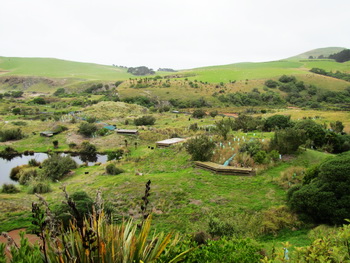
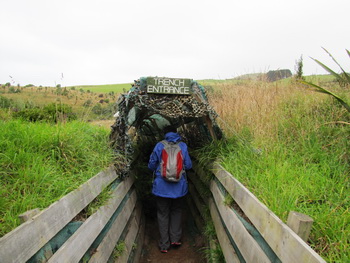
This year there are 40 healthy adult yellow-eyed penguins that leave the sandy beach in the morning to fish for their chicks and return in the late afternoon. We toured in the morning so only saw the nearly full-grown chicks in the wild and adults in the hospital.
Penguin Place runs a hospital to care for sick and malnourished birds. There were 45 at the time of our visit. The number of healthy birds is declining in this area and chicks stand only a 20% rate of surviving their first 6 months at sea. The penguins can begin mating at 6 years of age but the only mating pairs in this colony are about 20 years old, so the future does not look good here. It is believed over-fishing may be the cause of the decline. We left feeling depressed.
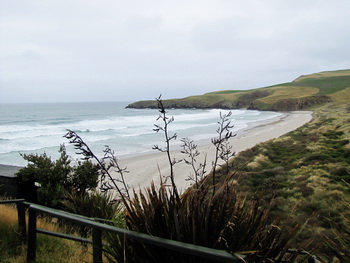
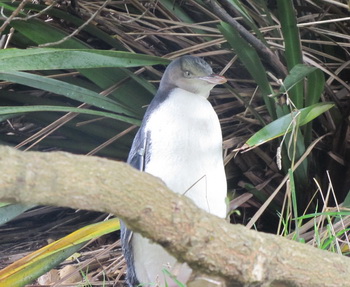
Penguin Place also provides boxes for little blue penguins to use to nest and when they molt and cannot swim.
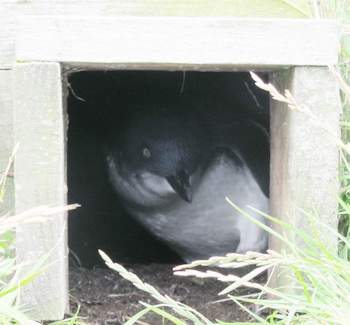
New Zealand fur seals come ashore to rest on the large flat rocks. They have pointy noses and long whiskers. Males weigh 90-150 kg (200-330 lbs) and females are about 1/3 the size.
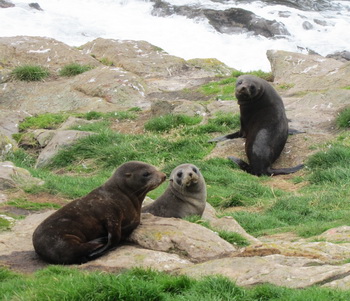
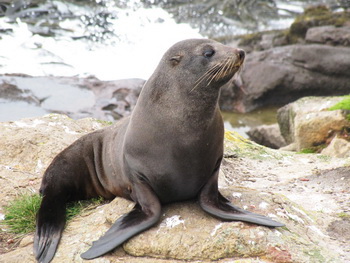
We drove Gerty out the peninsula along the curvy coastal route and took the high road that twists along the spine back to Dunedin, both gorgeous drives.
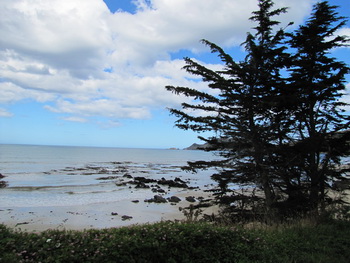
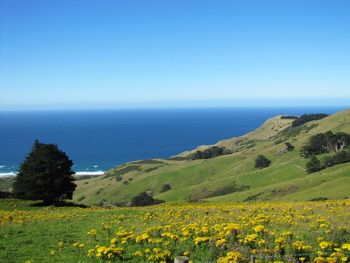
We were excited to finally reach the Catlins at the southern end of the South Island. Less traveled, the narrow country roads veer south of the main thoroughfare, which is still only a two land road, and run through miles of green pasture, past forests of beech and other dense trees, along sweeping bays, for us, under an enormous brilliantly blue sky.
We stopped at all the interesting points along the way: Kaka Point and nature reserve, Nugget Point with jagged rocks emerging from the sea like chunks of gold, Roaring Bay with a hide to watch yellow-eyed penguins come ashore, Surat Bay with New Zealand sea lions, Cathedral Caves, several waterfalls, Porpoise Bay with Hooker's dolphins, Curio Bay with yellow-eyed penguins and an exceptional petrified forest, and Slope Point, the southernmost bit on land on the South Island.
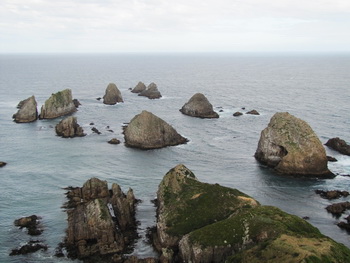
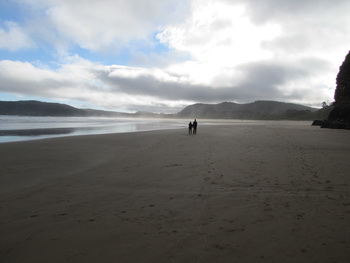
Our first night was spent at our favorite spot so far this trip, the quaint and unassuming Newhaven Holiday Park. Set in a beautiful natural setting among trees and along Surat Bay, a walk along the wide, deserted, sandy beach brought us to several New Zealand sea lions including a family consisting of a male, his harem of two, and a pup.
They played the entire time we watched them. Shortly after one of the females would stop and lie in the sand, the male would nip her on the back side and she'd roll over or jump into action again. The little pup was in constant motion running laps around the group.
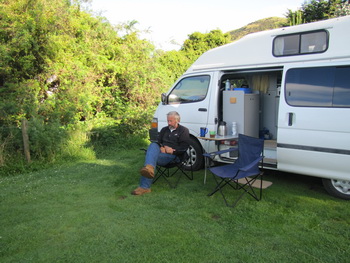
The following day we hiked as far as we could on the Catlins River Walk before being turned back by a broken and closed bridge. Birds sang magically as we wandered through the beech forest along the river. Interesting mushrooms sprouted along the way so we took pictures of them instead of the illusive birds. A swing bridge over the river was a highlight.
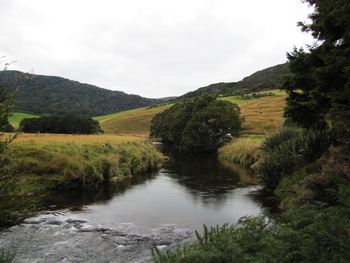
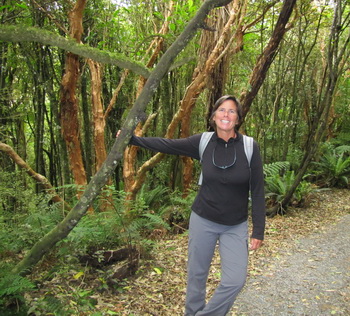
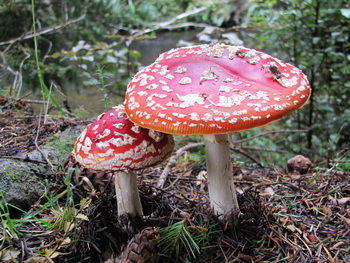
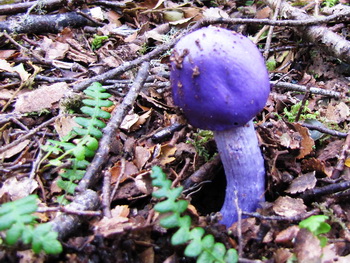
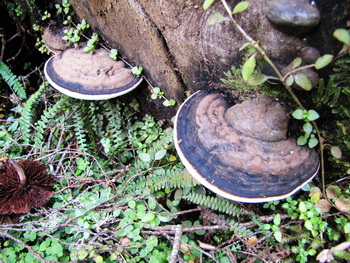
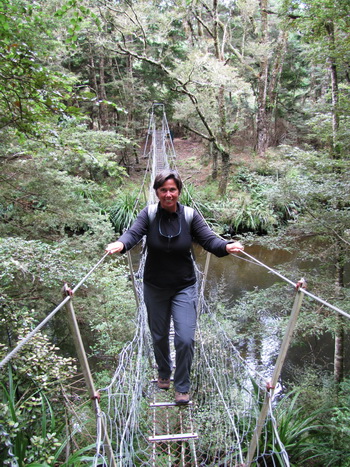
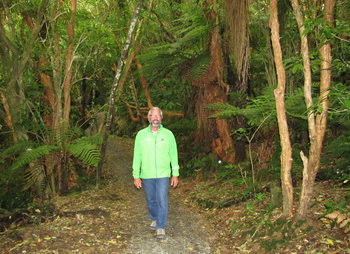
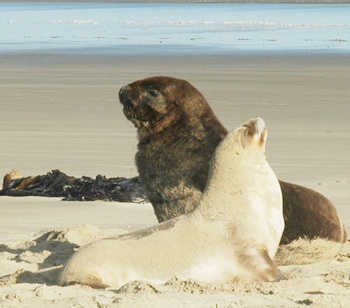
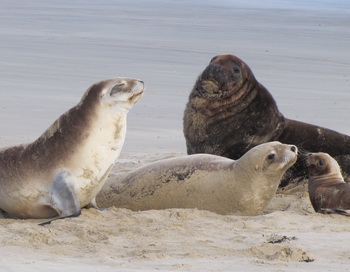
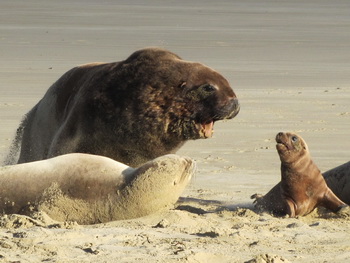
Archaeological evidence indicates New Zealand sea lions were once present all around the NZ coastline. However, hunting by Polynesian settlers and European sealers led to their near extinction. They were absent from the NZ mainland for 200 years and are now one of the rarest in the world.
Listed as Nationally Critical, the highest threat classification in NZ, they have been protected since 1893.
Normally they breed in the NZ subantarctic Campbell and Auckland Islands and only started to breed again on the mainland in the 1990s. Currently they can be found on the south and southwest coasts of the South Island and at Stewart Island.
NZ sea lions come ashore to rest and breed. Males are much larger (350-500 kg) and colored dark brown or black. Females are cream and silver and weigh about 30% of the males. Fully mature males have a ring of fur around their necks like a lion's mane. They have blunt noses, short whiskers and are found on sandy beaches and surrounding areas. Unafraid of people, they may completely ignore people passing by as they rest but may charge if someone approaches too closely.
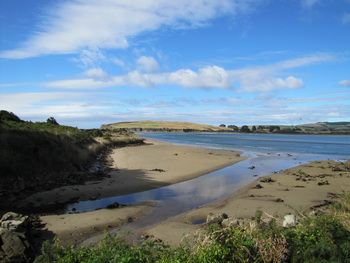
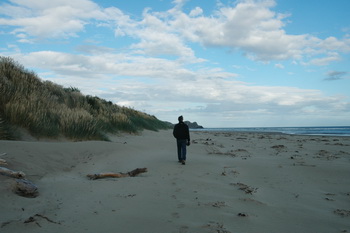
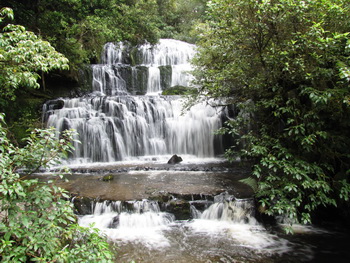
Cathedral Caves can only be visited near low tide. A lovely walk through the rainforest leads to the fine sandy beach where the giant cave hides in the vertical cliffs.
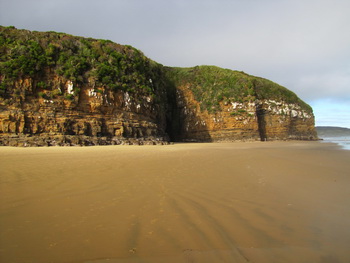
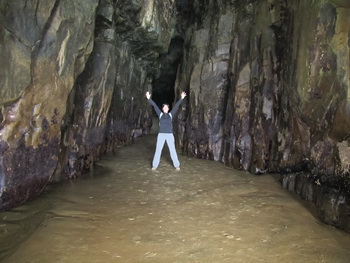


Our third night in the Catlins was at another favorite campground, Curio Bay. I was thrilled to find the holiday park filled with my favorite type of flax, of which there are some 60 different varieties here in NZ. Looks like the sea lions like it too!
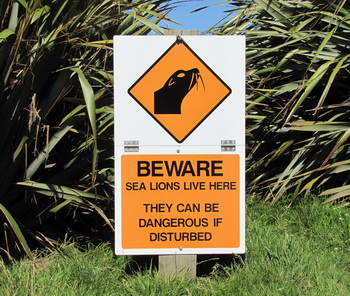
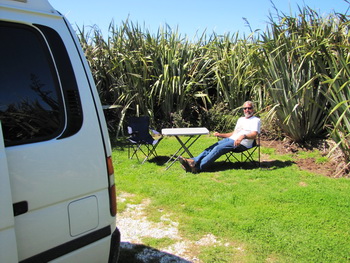
One side of the holiday park looks over Porpoise Bay where we saw the rounded dorsal fins on Hector's dolphins, the smallest in the world.
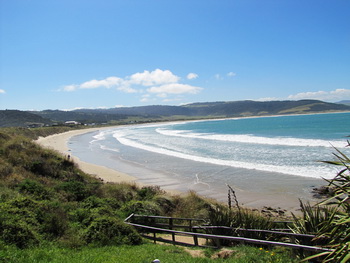
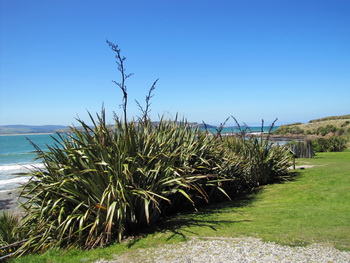
The other side of the campground is Curio Bay where an amazing petrified forest is revealed at low tide. People have been coming to see the attraction for years and recently yellow-eyed penguins have decided to move in as well. They are not afraid of people like those on the Otago Peninsula and seem to be doing well here.
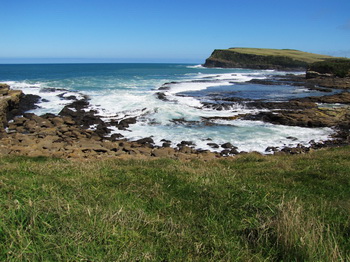
We spent the afternoon exploring the bays and soaking up the warm sunshine. At one point we stopped on the warm rocks of Curio Bay and fell sound asleep. How great that felt!
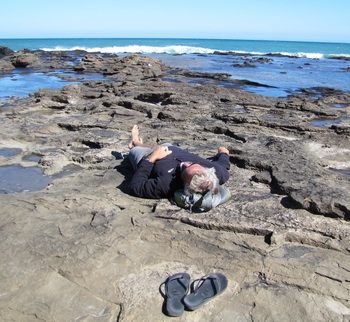
We walked back to Curio Bay a couple of hours before dark to see the yellow eyed penguins return to their nests. One by one they popped out of the water and onto the rocks where they preened, walked a little bit, stopped so as not to overheat, and continued.
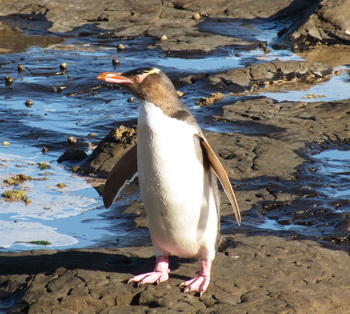
It took them almost an hour to make it across the rocks to the brush where they might continue up the hill many meters to their nests. Several anxious chicks greeted their parents on arrival. The chicks are almost full-grown and two have already fledged.
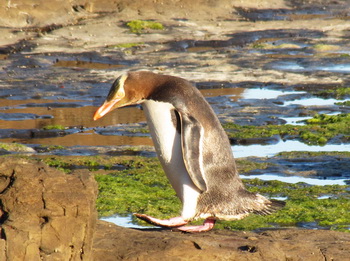
8 pair of penguins had two chicks each and all survived but two. A much better success rate than at Penguin Place further north.
Yellow-eyed penguins differ from other penguins that nest in large colonies in that they prefer to nest as pairs out of sight of other pairs. Once their chick fledges it's on its own, no longer part of the family.
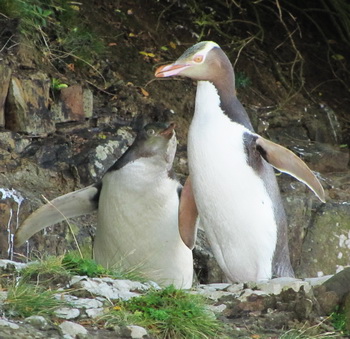
160,000 years ago the land here was elevated and the climate was subtropical. The rest of NZ was still under the sea. It was before grasses flowering plants existed. Tall kauri and lesser cycads and conifers made up the forest.
A sudden volcanic eruption combined with steady, heavy rain quickly killed the forest as silica laden mud and ash flowed down and impregnated the trees, turning them to stone within a matter of months.
Long after the ancient land disappeared and New Zealand emerged, the sandstone strata was cut back by the sea revealing broken logs and stumps still in their original positions.
This is the most varied and remarkable of the few fossil forests of this age on earth.
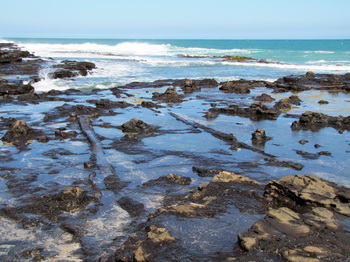
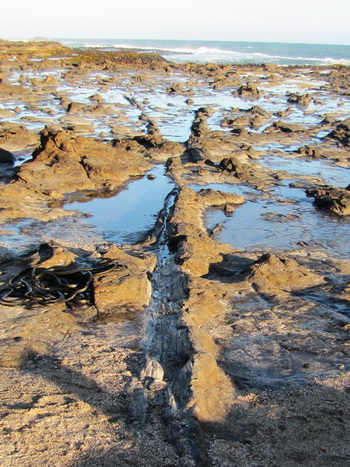
This morning we drove out to Slope Point and walked to the edge of the cliff to see the southernmost point of land on the South Island.
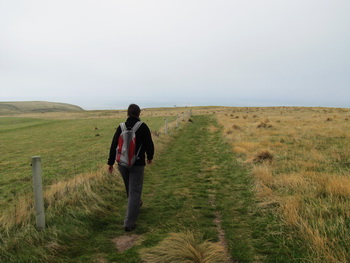
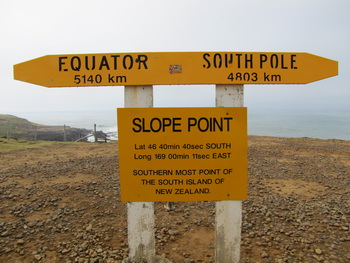
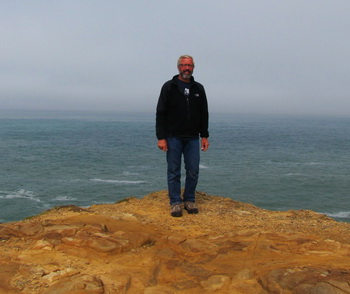
Now we are at Invercargill and will leave Bluff on a ferry to Stewart Island in the morning. There is a wedding going on in the only town and we cannot secure accommodation so we're taking our waterproof backpacks, tent and sleeping bags and looking forward to a wonderful adventure in the heart of the Roaring Forties.
Go to February Part 6 - Stewart Island